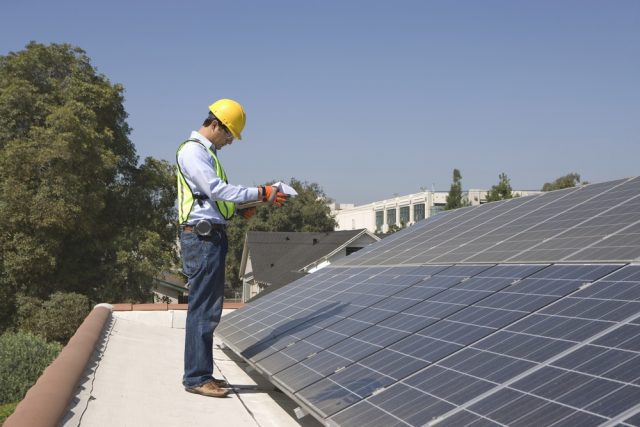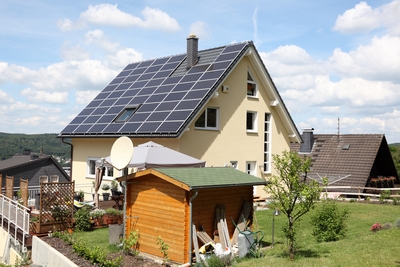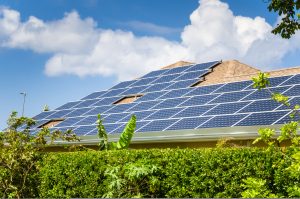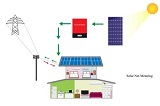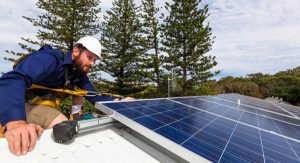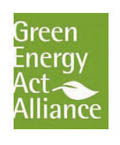Despite being good candidates for solar panels, most European properties currently don’t have them. A recently passed EU legislation, a revision of the Energy Performance of Buildings Directive, seeks to change that by mandating solar array installation on all suitable rooftops by 2025.
The initiative aims to accelerate the vast, underused potential of solar energy. It includes a proposal to gradually introduce an obligation to install solar panel arrays on public buildings and private dwellings.
The EU’s Solar Energy Strategy
Europe has seen skyrocketing power and fuel costs over the last year, spurred by Russia’s invasion of Ukraine. As part of an ongoing effort to stop relying on fossil fuels imported from Russia and ensure all buildings are energy-neutral by 2050, EU member states have reached an agreement on stricter energy standards for new and existing commercial and residential buildings.
Starting in 2028, all new government buildings constructed in the EU must be emission-free. From 2030, that guideline will also apply to all new buildings, including residential properties. In addition, major building renovations must include measures that improve overall energy efficiency. The overall goal is to achieve carbon neutrality by 2050.
The proposed guidelines also apply to parking spots at businesses. Within five years, offices with more than 20 parking spaces must equip at least 10% of them to charge electric cars. They will also need to retrofit half the parking spots with charging stations at a later date.
How Can the EU Benefit From Going Solar?
Solar energy is inexpensive, renewable and flexible. Accelerating solar panel deployment on buildings is critical to increase the resilience of Europe’s energy infrastructure.
Citing data from the European Joint Research Centre, a letter from a coalition of 18 organizations said that solar PV on buildings can deliver 25% of Europe’s annual electricity demand. The rapid rollout of efficient, clean energy throughout the EU will also create an estimated 400,000 new, skilled jobs in the solar sector. Scaling up manufacturing capacity will generate approximately €60 billion of new GDP per year in Europe.
Despite the obvious advantages, setting uniform climate and energy targets will be a significant challenge because the EU member states have differing construction standards. EU countries have agreed on a goal to encourage renovation and phase out underperforming buildings, but it remains uncertain how each member state will incorporate the new rules into national law and meet the stated objectives.
Tackling Europe’s Energy Crisis
As Europe weans itself off Russian energy, last year marked the first time wind turbines and solar panels produced more power than natural gas, according to a report from energy think tank Ember. Solar power increased by 24%, delivering an additional 39 terawatt hours of electricity over the previous year. Between May and August 2022, the EU generated 12% of its electricity from solar.
As fossil fuel prices overseas continue reaching new heights, European nations are phasing out natural gas and coal at record rates. Twenty EU member countries achieved a record share of solar generation over the previous year, creating an additional 39 terawatt hours of electricity.
In contrast, the U.S. produced only 5% of its energy from solar in 2022, while solar PV electricity in Canada currently accounts for less than 1% of our total electricity production.


